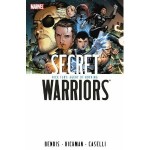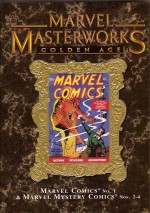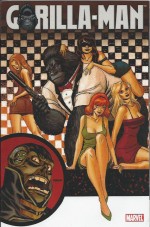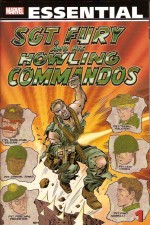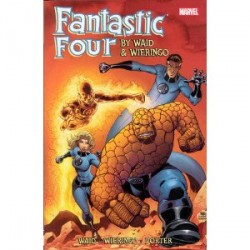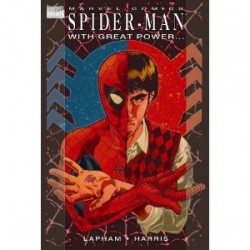
By David Lapham & Tony Harris, with Jim Clark, Stefano Gaudiano and Matt Milla (Marvel)
ISBN: 978-0-7851-1968-5
One of the most astounding comicbook stories ever began with the sublime origin tale of ‘Spider-Man!’ by Stan Lee & Steve Ditko in the last issue of Amazing Fantasy #15 (cover-dated September 1962); describing in 11 captivating pages the parable of Peter Parker, a smart but alienated kid bitten by a radioactive spider on a High School science trip.
Discovering he had developed arachnid abilities – which he augmented with his own natural genius in the fields of chemistry, physics and engineering – the boy did what any lonely, geeky nerd would do when given such a gift… he tried to milk for all it was worth in the hormone-fuelled determination to get girls, prestige, fame, money and girls.
Making a costume to hide his identity in case he made a fool of himself, Parker became a minor celebrity – and a criminally self-important one.
To his eternal regret, when a thief fled past him one night after a TV interview, the self-aggrandized Peter didn’t lift a finger to stop the felon, only to find when he returned home that his guardian and uncle Ben Parker had been murdered.
Crazy with a need for vengeance, Peter hunted the assailant who had made his beloved Aunt May a widow and killed the only father he had ever known, and tragically realised that it was the crook he couldn’t be bothered to stop.
His social irresponsibility had led to the death of the man who raised him and the boy swore to always use his powers to help others…
It wasn’t a new story, but the setting was one familiar to every kid reading it and the artwork was downright spooky. This wasn’t the gleaming high-tech world of moon-rockets, giant monsters and flying cars – this stuff could happen to anybody…
From that tortuous beginning Spider-Man swiftly evolved into one of the world’s most popular heroic characters with generations of writers returning to, mining and refining that simple tale for every possible nuance.
In 2008 star creators David Lapham and Tony Harris (with inkers Jim Clark and Stefano Gaudiano and colourist Matt Milla) took a hard look at the origin and came up with an impressive fresh avenue previously unexplored: what exactly happened during Parker’s brief fling with showbiz celebrity?
The result was a 5-issue miniseries under the elite Marvel Knights imprint that impressively added an even greater edge of tragedy and recrimination to the lad’s subsequent campaign and injustice…
Opening with the key page from the Lee/Ditko classic, most of this turbulent tale is set pretty much between those two panels and finds “the Spider-Man†signed up with a cheesy wrestling federation. The masked and obsessively secretive kid is obnoxiously revelling in his newfound power amongst these shady adult characters yet still being bullied in his “normal†life at High School: continually harassed by jock Flash Thompson whilst fruitlessly lusting after queen of the popular kids Liz Allen…
Uncle Ben and Aunt May are increasingly concerned by their sweet, clever boy. He’s become secretive, argumentative and unnaturally rebellious. Although they’ve been expecting it for years, the “Troubled Teen†phase is still a bit of shock and the solicitously understanding seniors combat it by giving the boy a clunky old car to show they accept his growing independence…
With the kid being taught all the tricks of show-fighting by the welcoming but jaded older wrestlers in the fight-stable, promoter Monty Caabash sees his compulsively anonymous new find as his ticket to the big time – and so do his gangster backers. With a lucrative West Coast TV sport show in the offing, they just can’t afford to lose their mysterious cash-cow, but the adulation and ready money is turning Peter’s head.
He dumps Uncle Ben’s gift in favour of a sports car only to wreck in a crazy drag race with Flash: an incident which puts him in an E.R., although his worried guardians have no idea since the unruly kid is frequently staying out all night these days…
As Monty invests more time and money in his prize fighter, the boy becomes a New York sensation and the promoter’s worldly-wise associate Tiffany LeBeck sees a way to use her own mature charms to win a piece of the millions Spider-Man could generate.
Before long the sex-starved kid is beguiled and besotted by the older woman’s charms and she becomes his manager; promising an inevitably clash with Monty’s ruthless backers.
At school Parker’s increased confidence has enabled him to make real headway with Liz too. With everything going right the ebullient boy spends some time back in his lab inventing a way to increase his cachet by inventing webbing and web-shooters: tricks that will make him even more spectacular in the ring and on the screen…
New York loves the mysterious celebrity and goes into media frenzy mode – all except the contrary publisher of the Daily Bugle. Inexplicably incensed, J. Jonah Jameson wants to know the truth about this Amazing Spider-Man and begins a highly provocative campaign against the wrestler and his management…
There are bigger stories. The first team of superheroes since WWII has emerged, battling monsters and villains with shining valour and full public disclosure. Spider-Man even watched the Fantastic Four in action once, battling the horrific spawn of the Miracle Man.
The kid was sitting in a safe skyscraper perch with one of his groupies nestled safely in his arms…
Peter doesn’t care about bad publicity and unfair comparisons: he’s a celebrity sportsman, not a crime-busting crusader. Even when a thief runs right past him after a TV interview, he does nothing. That’s the police’s job…
Ditching school, chasing girls, falling further under Tiffany’s slowly seductive influence, Peter gets a huge reality check when, during a confrontation with Uncle Ben outside a nightclub where he’s spent all night dancing with Liz, a colossal monster attacks the city, raining death and destruction upon hundreds of helpless citizens. Despite himself the boy explodes into action, saving Ben and his traumatised date, but horrifically failing to rescue a trapped stranger, even after the impressive man-monster dubbed The Thing comes to his assistance…
Shocked, confused and deeply upset in the aftermath, Parker gets blind drunk and returns to Tiffany’s boudoir, only to pass out too soon… Waking up face to face with Monty’s extremely unsavoury bosses he discovers the kind of people’s he’s involved with as chief hood Mr. Angel explains the facts of life.
Hollywood means big, legitimate money and Jameson’s smear campaign is making the TV execs nervous. So if everybody wants heroes like the FF, Spider-Man is going to be one – even if the mob has to set up kittens to rescue and slobs to save…
Peter complies but his heart isn’t in it: it’s only by sheer luck that he doesn’t cause the deaths of dozens of people and when that doesn’t placate Angel the racketeer opts to end his problems by shutting up Jameson for good…
Even Tiffany can’t handle that however and when she drunkenly reveals the scheme to her besotted boy Peter, he puts his mask back on and heads out to change his destiny forever…
With Jameson saved and his life back on track, Peter heads home to reconcile with Aunt May and Uncle Ben, only to find he house surrounded by police cars…
Dark, gritty, subtly sophisticated and rationally reasonable, this clever exploration of the in-between moments adds those layers of meaning to the tragic tale that modern, mature readers seem to dote on and, child of the simplistic Sixties though I am, even I found this extension of the classic story to be both beguiling and exceptionally entertaining.
This might not appeal to all readers but fans of the movie franchise will definitely find this a book worth pursuing.
© 2008 Marvel Characters, Inc. All Rights Reserved.


